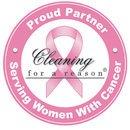Tips on How to Get Kids to Clean Their Rooms
Every parent knows that kids can create a lot of mess, and their rooms can be a disaster area! Teaching your kids to clean is an important life skill, and a great place to start is their own rooms. While no kid wants to clean, there are ways that you can make cleaning fun and easy for them so they are able to get into the habit of picking up after themselves. A great guide from Kaboose.com by Leigh Felesky goes over what you can do to help your kids learn to clean their room.
Get your kids to clean up their rooms with a few easy cleaning tips from The Maids.
Bed made. Clothes and toys put away. Books and papers in order. Every day, right? Not likely. Getting children to clean often comes with nagging and frustration. But with some careful planning, achieving a clean bedroom and home can be made easier.
Make it easy.
Parenting coach Barbara Desmarais, from Life and Parent Coaching in Vancouver, suggests parents use specific “action” questions and directions. For example, instead of “Go clean your room,” say, “Do you want to pick up the stuffed animals or the train? The big things or the little things? The clothes or the books?” This creates a productive team between the parent and child, and breaks the cleaning into manageable tasks so that the child knows exactly where to start and how to get it done.
Use a good storage and labeling system so children know where things are put away and where to find them, says Desmarais. For younger children, organize items similar to a pre-school room with different kinds of toys in different colored labeled bins. Home specialist Sandra Phillips, based in Whittier, California, suggests using wall space for storage as much as possible, including shelves and hooks, especially in bedrooms.
Go for kid-size.
As the mother of eight (now grown-up) children, Phillips was always frustrated by the fact that cleaning equipment isn’t kid-size. She suggests sawing off handles of brooms and mops to make them shorter. For older kids, make sure all the cleaning supplies are in one place and kept in easy-to-pour containers with clear instructions. Of course, younger children need to be monitored around or kept away from cleaning agents.
Phillips and her partner even invented the Klean-GuRoo, which appeared on ABC’s American Inventor television show in spring 2006. It’s a child-size, cart on wheels with all the tools needed to clean every room in the home.
Reduce clutter.
Living clutter-free isn’t always as simple as it sounds – for good reason. Fifty thousand new products were developed last year, explains Phillips, and there are 17 different kinds of toothpaste at the drug store. “It’s hard to be selective and we often overbuy. The result is excess that’s in, on or around us,” she explains. Extra stuff complicates our cleaning and makes kids discouraged. It causes problems because we lose things and get frustrated, and it can be the source of family fights.
To help, Phillips suggests that we “SOS” or “simplify our surroundings.” If you’re a clutter collector, ask yourself, “Is this item enhancing my life?” If the answer is, “No,” then give the item away to charity or toss it in the trash can. For other ideas, see our article, Get organized! Ten expert ideas to improve your family time.
Stay positive.
It’s crucial to encourage family fun, even when it comes to cleaning. And remember, the parents’ attitude, particularly the mother’s, drives the household pace, says Phillips. “Ask any of my eight grown children and they’ll all say that the work they did together as a family was as fun as the play – or at least they had better say that,” she laughs. “Keep in mind I had eight tries to get it right.”
Getting it right for Phillips meant that the children generally didn’t clean solo nor were they told they had to clean before they could play. Instead, she tried to make cleaning part of the play. Phillips calls it “home improvement” and a typical session would go like this: First, she told everyone ahead of time when they’re going to do home improvement. Then, she made the incentives family orientated, for example, serving a special bacon-and-egg muffin breakfast before tackling the chores. Phillips notes that there wasn’t always a reward and if there was one, it wasn’t always food. The real reward is being with the family and accomplishing something. “Children find out that good things happen when we all work together.” Phillips also encourages consistency and setting expectations that you can meet every time.
Create a game.
If games and rewards work best in your family, you may want to try role play or theme-based games. This may not work for the long haul but it can help to lay down good cleaning principles, get everyone involved and enjoying themselves. If your little ones are into trains, it’s time to clean the station. For the animal lovers, be the zoo keeper. Whatever pretend scenario you create, keep the motto that cleaning is a part of staying healthy and happy, and necessary in everyday life, whether it’s pretend or real.
For a little older kids you might want to try theme-related cleaning games. In the clean-up area, for example, hide a set number of candies, dinosaurs, or seasonal cut-outs (such as paper Easter eggs or pumpkins). Make sure they find them all and clean as they go
Take 15 minutes.
For some families, a short, 15-minute clean-up schedule works best. Clearly outline tasks on a paper list or card for every child. For task ideas, check out the House cleaning planner. Make the fifteen minutes fun by playing upbeat, workout-type music and have a clock or timer that counts down. Give warnings at ten minutes and five minutes. If your clock has hands, you can post motivational messages beside the numbers as the clock ticks down. To save time, you will want to make sure everyone has the required cleaning tools before you start.
For further rewards, you can give a sticker for those who finish their tasks to perfection in the allotted time. When the child gets a certain number of stickers she gets to pick the family activity – for example, what movie to watch or where to go for dinner.
Be a role model.
You can’t, of course, expect your child’s room to be cleaner than the rest of the house.
“Some people put a lot of energy into a spotless house, often at the expense of something else, while others don’t place it as a high priority,” notes Desmarais. Consider how important cleaning and organization are to you, and how you want to convey this to your children. Then, act accordingly and consistently.
This guide is from Kaboose.com, please visit them for more great guides!







